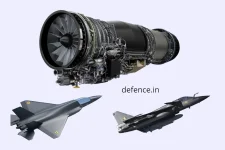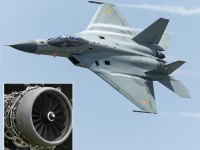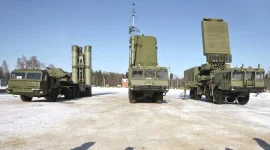- Views: 1K
- Replies: 10
In a significant proposal aimed at bolstering India's military aviation capabilities, Larsen & Toubro (L&T) Defence has put forward a "National Consortium" model to manufacture the country's futuristic Advanced Medium Combat Aircraft (AMCA).
Arun Ramchandani, the Executive Vice President of L&T Defence, suggested that a collaborative approach between public and private sector firms is the most efficient path to developing India’s first indigenous fifth-generation stealth fighter jet and meeting ambitious production deadlines.
The AMCA programme is central to India's strategy for modernising the Indian Air Force (IAF) and promoting self-reliance through the Aatmanirbhar Bharat initiative.
The aircraft is being designed by the Ministry of Defence's Aeronautical Development Agency (ADA) as a 25-tonne, twin-engine stealth fighter packed with advanced technologies.
Key features include internal weapons bays and the use of radar-absorbent materials to ensure a low-profile against enemy air defences, making it a formidable platform for a variety of missions.
The urgency of the AMCA project is underscored by the IAF's current operational strength, which stands at approximately 30 squadrons against a sanctioned requirement of 42.5. This sanctioned number is considered essential for managing potential threats on two fronts.
Recent India-Pak conflict have highlighted the critical need for advanced air superiority fighters. To address this, the government has set a clear timeline, with a goal to produce five prototypes by 2031 and commence series production by 2035 to eventually equip seven IAF squadrons.
On May 27, 2025, Defence Minister Rajnath Singh officially approved the execution framework for the AMCA, signalling a major step forward.
In a departure from past practices where Hindustan Aeronautics Limited (HAL) was the default manufacturer for such projects, the government has now opened the door for competitive bidding.
This allows private defence leaders such as L&T, Tata, and Adani to lead production, either independently or in partnership with other firms, including HAL.
Mr. Ramchandani's proposed consortium model would create a synergy between key organisations. It envisions a partnership involving the designer ADA, public sector undertakings like HAL and Bharat Electronics, and private industry giants such as Godrej Aerospace and L&T.
This collaborative approach is similar to successful European defence programmes like the Eurofighter Typhoon, which was jointly developed by a consortium of companies from the UK, Germany, Italy, and Spain.
By distributing work, sharing risks, and leveraging specialised expertise, a consortium could prevent the kind of delays that affected earlier projects like the Tejas Light Combat Aircraft (LCA) and ensure this vital national asset is delivered to the IAF on schedule.



